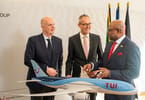CREDIT CRISIS, BEYOND THE NUMBERS
The great recession of 2009 cost the world dearly, at many levels. As the first rumblings of trouble were felt in Q3 and Q4 of 2008, analysts the world over feverishly started to explore what exactly was going on. How could the house of cards be falling so quickly and widely as a result of defaults on housing payments? Soon, with much shock, the symptoms pointed their arrows to the cause: the passing out of too much credit at individual, institutional, and international levels.
As a result, 2009 took on a global identity as the year of the Credit Crisis. From the start of the troubles, numbers became the focus: how much money was being lost, how many jobs were being eliminated, how many businesses were closing, how long would this last? On the surface the credit crisis was all about the numbers.
As 2010 unfolds and reflection on the losses takes place, one thing has become very apparent: our recent pains were caused by much more than excessive spreading of credit in the monetary sense. They were also caused by too much credit being given out in terms of emotional currency. And now institutions, individuals, and even investments around the world are facing severe losses in credibility.
Looking back at 2009, as credit dried up at both monetary and emotional levels, investment into development came to a grinding halt. Cranes stopped spinning, cement stopped pouring, workers stopped working, architects stopped designing, bankers stopped loaning, visionaries stopped dreaming. No matter how grand the plans were, the risks were unavoidable.
The global Travel & Tourism (T&T) sector – a dimension of the economy gaining recognition and respect for its significant impact on the ability of a nation to generate revenues, investment, trade, employment and goodwill – had started to see significant investment flows into tourism and general infrastructure development. Governments enjoyed a period of strong investment attraction through foreign direct investment, joint ventures, and private investors. Similarly, private developers were able to secure liquidity through banks and private funders. ROI was deemed high, risk low. There was every reason to believe that the 4 percent to 8 percent annual growth rates of tourism markets seen in 2006 and 2007 would continue through 2008 and beyond.
With the credit crunch of the latter part of 2008 and throughout 2009, however, came the collapse of personal and business traveler flows, air capacity, and yields, and overall T&T sector performance. Unsurprisingly, availability of credit came to a sharp halt for developers of T&T projects, be they airports, attractions, hotels or other. Confidence and momentum of construction behind the T&T sector, from resorts to road works, hit a cul de sac. Across the globe, T&T programs critical to the advancement and competitiveness of destinations had to down tools.
RENEWED INVESTMENT OPPORTUNITY
With the global financial community having declared the recession statistically over (if not yet emotionally), availability of credit and opportunity for investment is set to resume. With this comes the return of opportunity for the T&T sector to resume its efforts to build a stronger, more solid destination proposition, and in so doing, provide critical strengthening of the wider economy of the destination.
The fact remains, however, that resumption of development efforts is not simply a case of releasing the “pause” button. So much has changed, from the business climate to the business environment, and the resulting business models required to generate secure, sustainable results, especially within the T&T sector.
From a developer’s perspective, it is clear that governments and private sector entities investing in the T&T sector need to ensure that the fundamentals of their development plans are in place.
This includes, on the demand creation side, inter alia:
• Strategy targeting carefully-segmented source markets
• Clarity of destination offering
• Destination brand development
• Investment in destination marketing and promotion
• Invitation to travelers – leisure and business
• Ease of accessibility: entry visas, air/sea/road access, year-round
• Uniqueness of experiences, attractions, and local interactions
• Momentum of activity (ie, events) for ongoing traveler attraction
• Effective travel trade cooperation and coordination
And from a supply side, inter alia:
• Capacity and yield management of:
– Airlines
– Accommodation
– Attractions
• Skills development: hospitality and general service industry
• Safety and security
• In-destination public transport services
• Supporting services: healthcare, banking, retail
• Quality measurement and assurance
As with all development initiatives, a sound business plan must provide the foundation for future building.
Coming out of 2009, government and private sector leaders of T&T sector development programs must relook at the viability of plans to ensure that what is envisaged and emotively promoted is in fact capable of providing sustainable, equitable growth and competitiveness of the destination.
KPIs FOR TOURISM ROI
At the same time, what must be taken very seriously by governments and private entities seeking investment from outside parties, be it FDI or other forms of investment, are the fundamentals from an investor perspective.
The global investment community can be expected to look with sharper eyes at not only the T&T sector investment offerings being made available by destinations committed to growth and development of the sector, but the investment environments in which they will reside.
As a result, governments in particular must ensure the following 10 DIMENSIONS are taken into account when trying to secure the support and commercial commitment of the international investment community once more. This T&T INVESTOR CHECK-LIST provides a valuable framework for packaging investment opportunity by governments.
The T&T INVESTOR CHECK-LIST:
1. STABILITY: strength, certainty, and capability of the government leading the nation, providing reassurance of investment safety and longevity
2. SECURITY: assurance that investment funds are being utilized exactly as committed, that they are generating expected returns, and that investors are able to take earnings out of the country if and when desired
3. SYSTEMS: presence of reliable, trustworthy systems essential to effective investment mobilization, ie, banking, legal, fiduciary
4. STRUCTURE: solid investment and engineering infrastructure for investment activation
5. SUSTAINABILITY: capability of the investment to generate ongoing, meaningful return and enduring benefit to the growth and development of the T&T sector
6. SAFETY: the safety of the environment from a purely human perspective, ensuring risk-free presence of the people behind the investment working in the destination as temporary residents and/or visitors
7. SENSIBILITY: the philosophy and principles of the government and business community of the destination into which investment is being made
8. SPIRIT: the overall energy and outlook towards the future of the people of the destination
9. SCISSORS: the ability to cut through red tape in order to effectively and efficiently mobilize investment programs
10. SUPPORT: the willingness demonstrated by the government to embrace investors as partners in the advancement of the destination, assisting investors wherever possible to activate and maximize their investment
As the global economy recovers, so too will global investment. The T&T sector and the tourism economy deserve a great deal of credit for the impact they have on the advancement of nations. Now more than ever, governments and the business community of destinations play a critical role in successfully gaining credit due – attracting and activating investment into their T&T sector.
For investors, investment into the T&T sector will return to being highly appealing and highly inspiring for investors as markets strengthen in confidence. This appeal strengthens when considering all of the feel-good factors alongside emerging from the social, political, and economic impact of T&T sector growth. But investment cannot be at any cost. ROI must still be realized.
WHAT TO TAKE AWAY FROM THIS ARTICLE:
- With this comes the return of opportunity for the T&T sector to resume its efforts to build a stronger, more solid destination proposition, and in so doing, provide critical strengthening of the wider economy of the destination.
- Tourism (T&T) sector – a dimension of the economy gaining recognition and respect for its significant impact on the ability of a nation to generate revenues, investment, trade, employment and goodwill – had started to see significant investment flows into tourism and general infrastructure development.
- From a developer's perspective, it is clear that governments and private sector entities investing in the T&T sector need to ensure that the fundamentals of their development plans are in place.






















